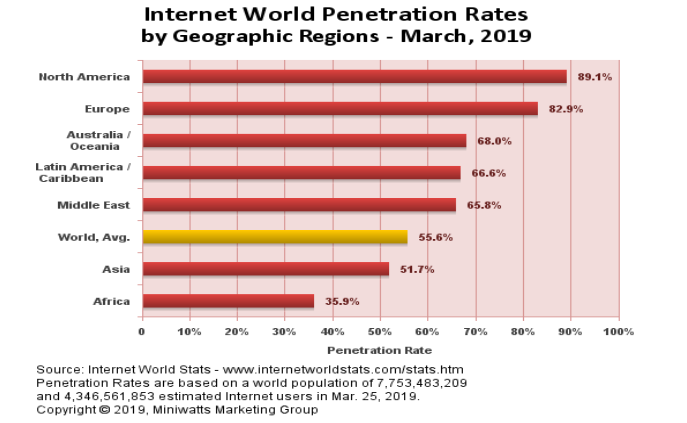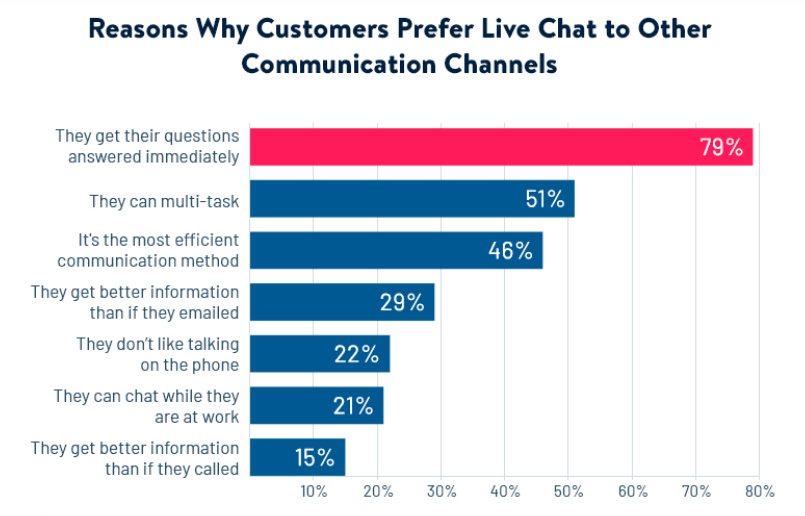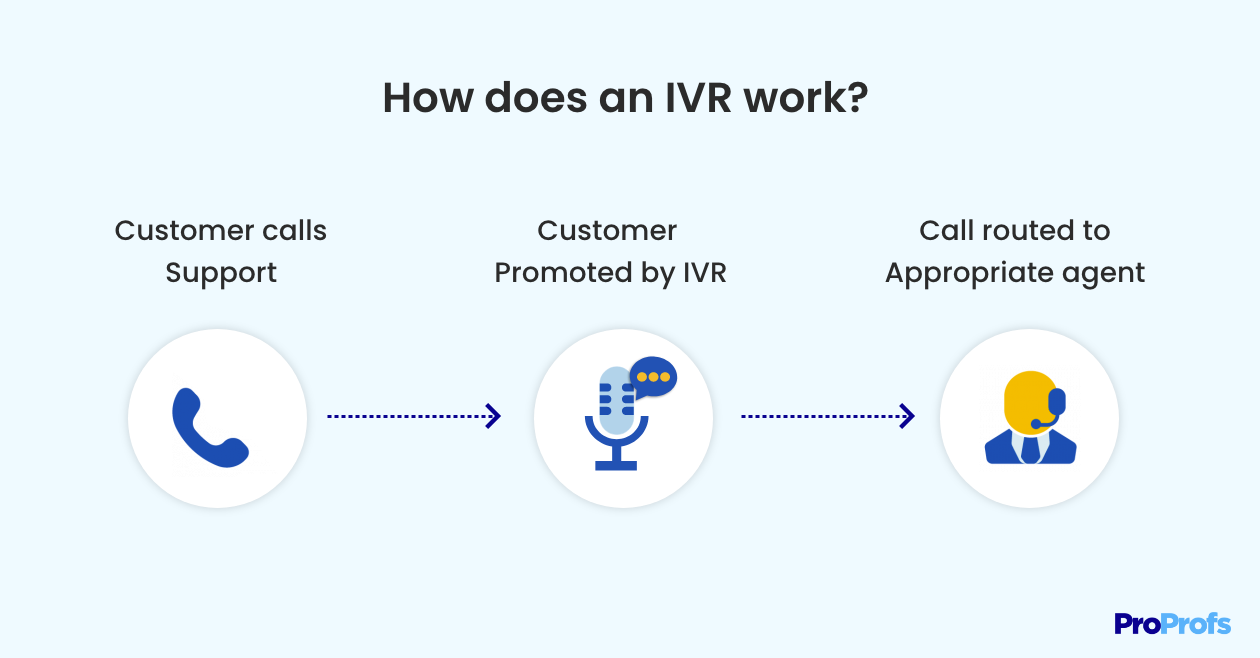Customer service – these two simple words rule the business landscape today.
A small setup or an established business – there is only one thing that can guarantee long-term survival and success: the quality of the service and experiences you provide.
While it appears straightforward on the surface, the reality reveals a different side of this theory.
A common and the most daunting challenge companies face today is – which type of customer service is best suited for which group of customers.
Following a one-size-fits-all approach for customers with unique preferences can be catastrophic and lead to a loss of loyal customers.
Luckily, as the business landscape has evolved, there are now different types of customer service you can adopt to ensure that every customer walks away with a delightful experience.
This blog draws light on the most popular types of customer service you can embrace to stay connected with customers and make them stick to your brand.
What is Customer Service?
Customer service refers to the support and assistance provided to customers from the time they visit a company’s website to the moment they indulge in a purchase and beyond. The prime objective of customer service is to help customers have a great experience across all stages – product discovery, purchase, use, and troubleshooting.
Today customer service is not just limited to emails and calls. It has moved past these traditional mediums and now covers digital channels such as self-service, live chat, social media, and many more.
Whether customers choose to stick to a brand or switch to its competitors depends largely on the quality of service and the experience they receive. In fact, it forms the base of every decision customers make during their association with a business.
The crux of the story is that spectacular customer service is the need of the hour that can set your business up for success today, tomorrow, and beyond.
Types of Customer Service
Top-notch customer service is important for every business, but what’s even more important is figuring out which type of customer service suits your customers the best.
Here are the top 10 types of customer service you can choose from to deliver a delightful experience to your customers.
1. Traditional Walk-in Customer Service
There was a time when customers had to walk to the customer service section of a brick-and-mortar store to get a refund, return a product, or file a complaint. This trend continues even today.
No matter how digitized life gets, some people prefer sticking to the old ways.
Face-to-face interactions leave a different impact, making customers feel more comfortable and confident about the purchase or the related services. It also gives your representatives the opportunity to indulge in deep conversations and pick up little verbal and non-verbal cues to better understand customer needs.
While walk-in customer service is certainly better in terms of quality, it can be more time-consuming and sometimes even put you in troublesome situations when you’ve to deal with angry customers.
Pros –
- Gain both verbal and non-verbal cues to figure out where the conversation is going
- Understand customer needs better through real-time feedback
- Establish strong bonds with customers with meaningful conversations
- Easily cross-sell and up-sell products
- Win customer trust and confidence
Cons –
- Creating a separate customer service section in your store can be expensive
- Providing 24×7 service is not possible
- It lacks the convenience that other online platforms offer
Best Suited For
If you are a brick-and-mortar company with multiple physical outlets but a weak online presence, a dedicated walk-in customer service department is a must.
2. Phone Support
Phone support is one of the most common customer service types that is still dominant, despite the rise of various other online platforms.
Around 40% of customers prefer talking to a real person over the phone when the problem is complicated. Most of the time, customers begin the interaction over chat, social media or email, but end up escalating it to a phone call for better quality support.
But, what makes phone support so helpful?
The warmth of the human voice that none other online support channel provides. Agents can lend an ear to customer problems, assess their voice tone and emotions, and accordingly address their issues.
Having someone listen to customer concerns and provide accurate solutions right away goes a long way in building strong customer relationships that last a lifetime.
It’s worth mentioning that although a traditional phone support system is great and usually the way to go, some businesses prefer offering phone support through a VoIP phone service because while it carries all the normal features of traditional phone support it also supports caller ID, call forwarding, call management, voicemail, call waiting, conferencing, video calls, and more while still costing less than a traditional phone system. However, deciding to opt-in for this is usually a decision specific to each business and there’s no one size fits all solution.
Pros
- Boost Your First Contact Resolution (FCR) rate
- Personalize the experience to a customer’s unique needs
- Natural, real-time conversations
Cons
- Setting up a contact center is a costly affair
- Long call cold time can ruin the customer experience
- International calls can be expensive for customers
- Handling multiple calls simultaneously is not possible for agents
Best Suited For
All kinds of businesses. Regardless of how digitized our lives get, the phone still remains a popular medium to seek help.
3. Self-Service Customer Support
Today’s customers want everything at their fingertips. Courtesy of the ‘Click and Get’ culture, customers are becoming increasingly impatient. A slight delay of a few minutes in getting what they want can lead to frustration, or even worse, complete abandonment of your brand.
Knowledge base software is one of the best customer self – service options are one of the best customer service options for today’s customers who crave nothing but convenience. It helps them find the right answers to their questions, anytime, whether it is day or night, and from any part of the world.
61% of customers today prefer to handle issues on their own. It makes customers feel empowered and gives them quick access to necessary information that they can use to learn more about a product and solve problems independently.
While it is a cost-effective and incredibly helpful type of online customer service, it demands regular maintenance in terms of content quality, SEO, and design.
Pros
- 24×7 access to reliable information
- Anytime, anywhere seamless support
- Assist both customers and agents
- Decrease support tickets and cost
- It can be translated into multiple languages for a diverse customer base
Cons
- Requires regular maintenance of content quality and relevance
- Practically not possible to include all customer problems in the knowledge base
- A knowledge base with incomplete information can feel frustrating to customers
- Information search can be difficult at times
Best Suited For
Any business that aims to offer pro-active support to customers should consider creating a self-service help center. It works great for small and large businesses operating across industries, including but not limited to healthcare marketing trends, e-commerce, SaaS, etc.
Read More: Self Service Customer Support – Everything You Need to Know
4. Email Support Customer Service Type
Among the different types of customer service, email still stands firm as a popular choice, as it was a few decades ago.
When over 50% of the world’s population has email accounts, the number of customers seeking support via email is only going to increase.

Mobile-friendly, convenient, and cost-effective – these are just some of the reasons customers prefer email to seek support from companies. While phone calls allow customers to speak their heart out, emails help them document problems in a systematic way and even attach relevant files, videos, and images to explain their issues in a better way.
On the other end, agents find emails more convenient as they give them the time to assess customer problems carefully before responding. Besides, agents can also use canned responses for common customer questions and maintain a good first response time.
At times when nothing works, a simple email can be your saving grace!
Pros
- Provide personalized responses to customers
- Send canned responses for repetitive questions
- Safely document customer conversations
- Automated scheduling and follow-ups
Cons
- Difficult to monitor all emails
- Increased chances of missing out on some emails
- Time-consuming to share long replies over emails
- Customers can get impatient and frustrated due to delayed responses
Best Suited For
The email customer service model is good for B2B companies where problems are more complex, and agents need time to fix them.
5. Live Chat Customer Service Type

If you are looking for a customer service type that gives customers the best of both worlds – digital support and a human touch, then a live chat software is perfect for you.
In the age of instant gratification, where customer satisfaction depends on how quickly you can honor and address their requests, live chat is a blessing to have. Your agents can use it to indulge in real-time conversations with customers. They can guide them through your products, self-service knowledge base and support them at every step of the way – all via chat.
No wonder there is over 50% of customers in customers using live chat since 2012.
While live chat is a convenient way to communicate with businesses for customers, this type of customer service is highly beneficial for agents as well. They can communicate with multiple customers at the same time and give equal attention to all requests.
What’s even more fascinating about live chat is that it allows agents to proactively initiate conversations with customers, while they are browsing through your product pages.
Pros
- Agents can handle multiple customer requests simultaneously
- Possibly to proactively reach out to customers
- Agents can use canned responses for repetitive questions
- Provide real-time assistance to customers
Cons
- Possibility to misinterpret customer problems
- Customers have high expectations of immediate support
- Agent replies can feel scripted at times
- A Live chat system that’s not optimized for mobile phones defeats the purpose of providing instant help
Best Suited For
Good for growing online businesses that want to deliver world-class support in a cost-efficient way.
Read More: How to Boost Customer Engagement Using Live Chat
6. Chatbots Customer Service
If there is any customer service channel that tirelessly works round the clock and is always at your customers’ disposal, it is chatbots.
These virtual assistants are designed to help customers 24×7 and give them what they need in a matter of seconds.
There is a reason why the popularity of chatbots is increasing exponentially. The unmatched speed and convenience this fully automated customer service type provide makes it a go-to option for customers whenever they are in need of help.
Incorporating a chatbot also gives a sigh of relief to your agents as they no more have to do mundane tasks and can instead focus on more complex customer issues.
Not only that, it is cost-effective and time-saving too.
Research shows that chatbots will help companies save a massive 2.5 Billion customer service hours by the end of 2023.
Although chatbots offer an attractive bunch of benefits, they lack something very significant – a human touch!
Pros
- 24×7 accessibility removes all boundaries of time and place
- A good cover-up for situations where agents are not available
- Chats can be diverted to relevant agents if a chatbot is unable to address the problem
- Share knowledge base article links with customers for a better experience
Cons
- Answers can seem robotic, forcing customers to talk to a real agent
- It doesn’t provide personalized responses
- Chances of misinterpretation and confusion
- Implementing a chatbot can be expensive
Best Suited For
Service-heavy, large, and well-established companies in the space of retail, travel, telecom, etc., can go for chatbots.
Read More: A Quick Guide on What is a Chatbot & How it Works
7. Social Media Customer Service
The dominance of social media platforms is growing exponentially, with Facebook, Youtube, Instagram, and Whatsapp occupying the top positions.

Tapping your active customers on these platforms can keep you on top of the customer service game.
A significant advantage of social media customer service is that it helps you stay connected with customers on the platforms they love the most.
But you have to be very careful while using this type of customer service. Customers are quick to vent their frustration on social media, which can spread like wildfire and tarnish your brand image. On the contrary, happy customers do not hesitate to sing praises about deserving brands on such platforms.
You need to keep a constant check on brand mentions in discussions, comments, and posts. Also, whenever a customer messages you for help, be quick to respond and ensure that you talk politely even when confronted with bad remarks.
While social media is great for one-on-one customer service and establishing deeper connections with customers, it is also a wonderful platform to market your products to the right prospects.
Pros
- Easy and convenient for both customers and companies
- Provide personalized and speedy responses
- Proactively inform customers about new product and service developments, downtime, etc.
- Engage with customers by launching campaigns and contests
Cons
- One wrong decision can ruin your hard-earned brand image
- Impossible to timely respond to all social media messages unless you have a dedicated team
- Negative reviews can harm your reputation
- Solutions to complex issues can’t be explained on social media and have to be shared on a more appropriate channel
Best Suited For
Both online and offline businesses can tap social media to boost their brand awareness and stay connected with customers
8. Interactive Voice Response (IVR) Customer Service
Have you experienced calling an agent and listening to an automated system saying – “Press 1 for XYZ issues”?
We all have been there and done that. That’s what an Interactive Voice Response (IVR) system is. It is an automated phone system that acts as the first point of contact for customers who prefer phone support over other channels. It offers an automated menu to customers as they call and directs them to the right option or agent, thus ensuring a seamless experience.

While IVR presents customers with pre-recorded answers for basic issues, complex issues are generally transferred to the relevant agent using intelligent routing.
Proper implementation of IVR can reduce support calls and labor costs to a large extent. But going wrong with it can further increase customer frustration.
Since IVR is the customers’ first point of contact, it is important to design it thoughtfully in a way that it has just the right number of options, clearly explained to avoid any confusion at customers’ end.
Pros
- Reduces the inflow of support requests reaching your agents
- Agents can fully focus on serious customer issues
- 24×7 availability makes it a preferred support option for customers
- Eliminates the waiting time for simple issues
Cons
- Impersonal, robotic answers can be frustrating for customers looking for a better experience
- Capable of solving only basic customer problems
- A hefty upfront investment makes it a costly option for small businesses
- Less and too many options in the IVR menu can spoil the customer experience
Best Suited For
Good for startups and growing companies. Using an IVR, such businesses can give their customers an easy platform to get basic issues resolved or connect to a relevant department.
9. On-Site Customer Service
On-site customer support is provided in person, right where your customers are.
This type of customer contact service is designed to help customers with complex technical issues mostly related to product repairs, installation, or maintenance. Since such tasks require technical troubleshooting skills, you should deploy a dedicated, well-qualified team to do the job.
On-site customer support is more expensive than other types of consumer services as it involves various expenses such as hiring qualified professionals and taking care of their travel and training requirements.
Although this type of customer service is a little heavy on the pocket, the strong relationship it helps you build with your customers makes it an option worth pursuing.
There are various customer service areas where you can implement on-site support. For example, when you launch a new product and want genuine feedback from customers, on-site customer service proves to be an optimal solution.
Pros
- Create strong connections with customers
- Provides genuine feedback for product or service improvement
- Highly convenient for customers
- Customers find it more trustworthy as the problem is solved right in front of them
Cons
- It is an expensive support option that can be provided only to limited customers.
- Long commutes can be exhausting for agents.
- Agents have to be trained in multiple areas besides technical support, such as customer communication, relationship management, etc.
Best Suited For
Companies operating in the technology space can go for on-site customer service. The customers of such companies often encounter complex technical problems for which on-site support works well.
10. Customer-Focused Communities and Forums
A passionate community that supports your customers and acts as a representative for new clients can take your customer support to a whole new level.
Today, competition is not just limited to businesses operating in your region. It has moved past the physical boundaries, involving businesses of all kinds and sizes from across the globe. To stand out and make a name for yourself, you have to leverage your most important resources, i.e., your customers.
This type of customer service might take some time to become a possibility. Once you have a good customer following, you can create an online community that allows customers to exchange ideas, feedback, suggestions, and other important information.
A forum introduces customers to insights they didn’t know before and facts they didn’t know exist. They can learn from one another’s experiences to use your products better and become an integral part of your family.
Pros
- It gives customers the freedom to express their views and share their experiences
- Helps in upselling and cross-selling your products and services
- Requires minimum investment to set up a customer community
Cons
- Regular content moderation required to maintain quality
- Spammers can join the community and post negative comments to harm your brand
- Negative word of mouth spreads easily in communities
Best Suited For
B2B businesses that have a sizable following can create communities and forums. An already established clientele who follow your brand can effectively run the community and be your best brand ambassadors.
How to Choose the Best Customer Service Type to Fulfil Unique Customer Needs
Whether you are a growing business or an established organization, it’s natural for you to have a diverse customer base with different needs and expectations.
Based on the situations you encounter, and problems you deal with, different types of customer service will appeal to you. But you’ve to be wise while making a choice.
Take into account factors such as the channels your customers prefer the most, the size of your team, and ongoing trends before selecting a suitable customer service type. That being said, it doesn’t mean you should just stick to a particular customer service type for life.
Adopt a mixed approach and embrace different customer service models that fulfill the unique preferences of your customers.
Take the consumer service example of any big brand, and you will provide multiple channels and a connected experience. Follow their footsteps while keeping into account your budget and provide your customers a mix of convenience and speed for a delightful experience.
Make the Right Choice to Achieve Ultimate Customer Delight
Every customer is different. Clearly, a one-size-fits-all approach is not something you would want to adopt.
For some customers, self-service works well, while others are more drawn towards phone support. Some find emails to be the best source of help, and others prefer chatbots as they are more technologically inclined.
Before deciding the best customer service type, it is important to understand your target audience. Analyze their preferences and segment them so you can decide the type or types of customer service you should adopt.
Remember, customer needs keep changing. A rich mix of support channels is what you need to meet the constantly evolving customer preferences and achieve your ultimate goal – customer delight!
FREE. All Features. FOREVER!
Try our Forever FREE account with all premium features!







